Dry Type Transformer Market Outlook:
Dry Type Transformer Market size was over USD 7.21 billion in 2025 and is poised to exceed USD 13.53 billion by 2035, witnessing over 6.5% CAGR during the forecast period i.e., between 2026-2035. In the year 2026, the industry size of dry type transformer is estimated at USD 7.63 billion.
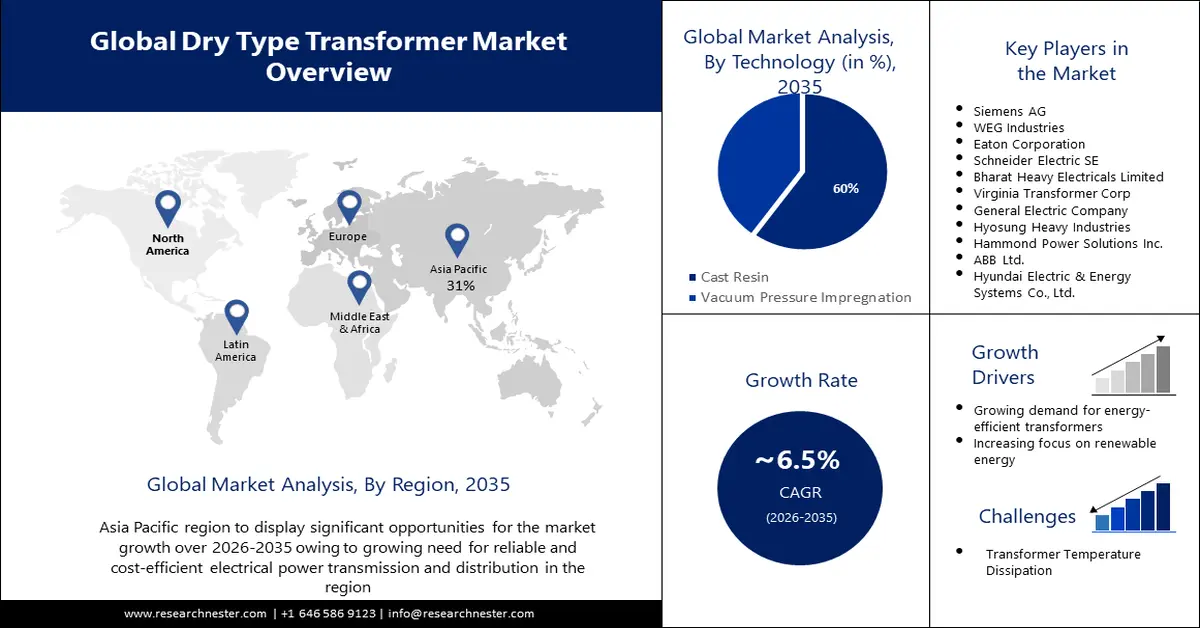
Stricter safety and environmental regulations around the world are encouraging the adoption of dry-type transformers. The absence of flammable insulating oil in dry-type transformers reduces the risk of fires and environmental contamination, making them a preferred choice in areas where safety and compliance are paramount.
As sustainability becomes a central focus for many industries, including construction and infrastructure, dry-type transformers align with green building initiatives due to their lower environmental impact and energy efficiency. These transformers use air instead of oil as a cooling and insulating medium, which eliminates the possibility of oil leaking into the environment.
Key Dry Type Transformer Market Insights Summary:
Regional Highlights:
- The Asia Pacific dry type transformer market will hold over 31% share by 2035, driven by growing need for reliable power transmission and increasing demand for electrical products.
- The North America market will secure 26% share by 2035, attributed to demand from IT/telecom, data centers, and industrial sectors along with smart city development.
Segment Insights:
- The cast resin technology segment in the dry type transformer market is expected to capture a 60% share by 2035, driven by advantages over oil-immersed transformers such as fire safety and durability.
- The dry type converter transformer segment in the dry type transformer market is expected to hold a 59% share by 2035, attributed to increasing demand from oil & gas, utilities, and renewable industries.
Key Growth Trends:
- Growing demand for energy-efficient transformers
- Increasing focus on renewable energy
Major Challenges:
- Transformer Temperature Dissipation
- Complexity of Maintenance and Repair
Key Players: Siemens AG, WEG Industries, Eaton Corporation, Schneider Electric SE, Bharat Heavy Electricals Limited, Virginia Transformer Corp, General Electric Company, Hyosung Heavy Industries, Hammond Power SolutionsInc., ABB Ltd., Hyundai Electric & Energy Systems Co., Ltd.
Global Dry Type Transformer Market Forecast and Regional Outlook:
Market Size & Growth Projections:
- 2025 Market Size: USD 7.21 billion
- 2026 Market Size: USD 7.63 billion
- Projected Market Size: USD 13.53 billion by 2035
- Growth Forecasts: 6.5% CAGR (2026-2035)
Key Regional Dynamics:
- Largest Region: Asia Pacific (31% Share by 2035)
- Fastest Growing Region: Asia Pacific
- Dominating Countries: United States, China, Germany, Japan, India
- Emerging Countries: China, India, Japan, South Korea, Thailand
Last updated on : 11 September, 2025
Dry Type Transformer Market Growth Drivers and Challenges:
Growth Drivers
-
Growing demand for energy-efficient transformers- The growing demand for energy-efficient transformers is a key driver of the increasing popularity of dry type transformers. As the world becomes more focused on reducing its carbon footprint, industries are looking for ways to improve their energy efficiency, and dry type transformers are an excellent solution. The United Nations has stated that there is a need to decrease carbon dioxide emissions by 45 percent by 2030 compared to levels observed in 2010. Additionally, they have set the goal of achieving zero emissions by the year 2050.
-
Increasing focus on renewable energy- The increasing focus on renewable energy sources, such as wind and solar power, has been a major driver of the demand for dry type transformers. These transformers are crucial in facilitating the transmission and distribution of power generated from renewable sources, which tend to be located in remote areas where traditional oil-filled transformers may not be suitable. For instance, wind turbines generate power at high voltages that need to be stepped down before they can be distributed to homes and businesses.
Dry type transformers are ideal for this purpose as they are able to handle high voltage levels and are more resistant to environmental factors such as moisture and dust. -
Increased industrialization and urbanization- The rapid pace of industrialization and urbanization in developing countries has led to a surge in demand for electricity. This demand has been met by the installation of new power generation technologies plants, transmission lines, and distribution networks, which require high-quality transformers to ensure efficient energy transfer. Dry type transformers have emerged as a popular choice in these regions due to their durability, low maintenance costs, and high efficiency. Moreover, they are better suited to handle the harsh environmental conditions prevalent in many developing countries, making them a reliable choice for industrial and urban applications.
Challenges
-
Transformer Temperature Dissipation - Dry-type transformers operate at higher temperatures compared to oil-filled transformers. Proper heat dissipation is crucial to prevent overheating and maintain transformer efficiency. Adequate ventilation and cooling systems are necessary, which can add complexity and cost to installations.
-
Dry-type transformers are often designed for specific applications, which can lead to customization challenges
-
Complexity of Maintenance and Repair
Dry Type Transformer Market Size and Forecast:
| Report Attribute | Details |
|---|---|
|
Base Year |
2025 |
|
Forecast Period |
2026-2035 |
|
CAGR |
6.5% |
|
Base Year Market Size (2025) |
USD 7.21 billion |
|
Forecast Year Market Size (2035) |
USD 13.53 billion |
|
Regional Scope |
|
Dry Type Transformer Market Segmentation:
Type Segment Analysis
The dry type converter transformer segment is estimated to hold 59% share of the global dry type transformer market in the year 2035. The segment growth can be attributed to the increasing demand for dry type converters from end-use industries such as oil & gas, utilities, and renewables as they are more efficient than other types of converters.
Moreover, dry type converters are less prone to fire hazards due to their non-flammable insulation, which makes them ideal for harsh and hazardous environments. They also offer significantly higher short circuit strength as compared to other types of converters, thus making them a preferred choice in many industries.
Technology Segment Analysis
Dry type transformer market from the cast resin technology segment is estimated to gain a significant share of about 60% in the year 2035. The growth of this segment can be attributed to the fact that this technology offers many advantages compared to traditional oil-immersed transformers, such as greater fire safety, increased durability, and improved environmental friendliness. Aside from the low noise levels, reduced weight, and compact design, its fire-resistant materials make it an ideal choice for a wide range of applications.
Our in-depth analysis of the global market includes the following segments:
|
Type |
|
|
Technology |
|
|
Rating |
|
|
End Use |
|

Vishnu Nair
Head - Global Business DevelopmentCustomize this report to your requirements — connect with our consultant for personalized insights and options.
Dry Type Transformer Market Regional Analysis:
APAC Market Insights
Dry type transformer market in Asia Pacific is anticipated to hold the largest with a share of about 31% by the end of 2035 on account of the growing need for reliable and cost-efficient electrical power transmission and distribution coupled with the increasing demand for electrical and electronic products in the region.
Furthermore, the market growth in the region will be enhanced by the rise in investments, particularly in the development of advanced and modern residential sectors. A notable example is Aflac's accomplishment in December 2020 where they made sustainable investments totaling over USD 1.7 billion. These investments primarily focused on supporting education, affordable housing, public transit, and hospitals both, in Japan and the United States.
North American Market Insights
The North America dry type transformer market is estimated to be the second largest, registering a share of about 26% by the end of 2035. The market’s expansion can be attributed majorly to the rise in demand for dry type transformer from various sectors such as IT/telecommunication, data centers, and industrial, due to their low maintenance cost and high efficiency in comparison to other transformers.
Additionally, the increasing focus on the development of smart cities and the rising trend of industrial automation is expected to fuel the demand for dry type transformers in the coming years. Smart cities require reliable and robust power systems, and dry type transformers are more efficient and less prone to breakdowns in comparison to their liquid-filled counterparts. Similarly, industrial automation requires a secure and reliable power supply which dry type transformers can provide.
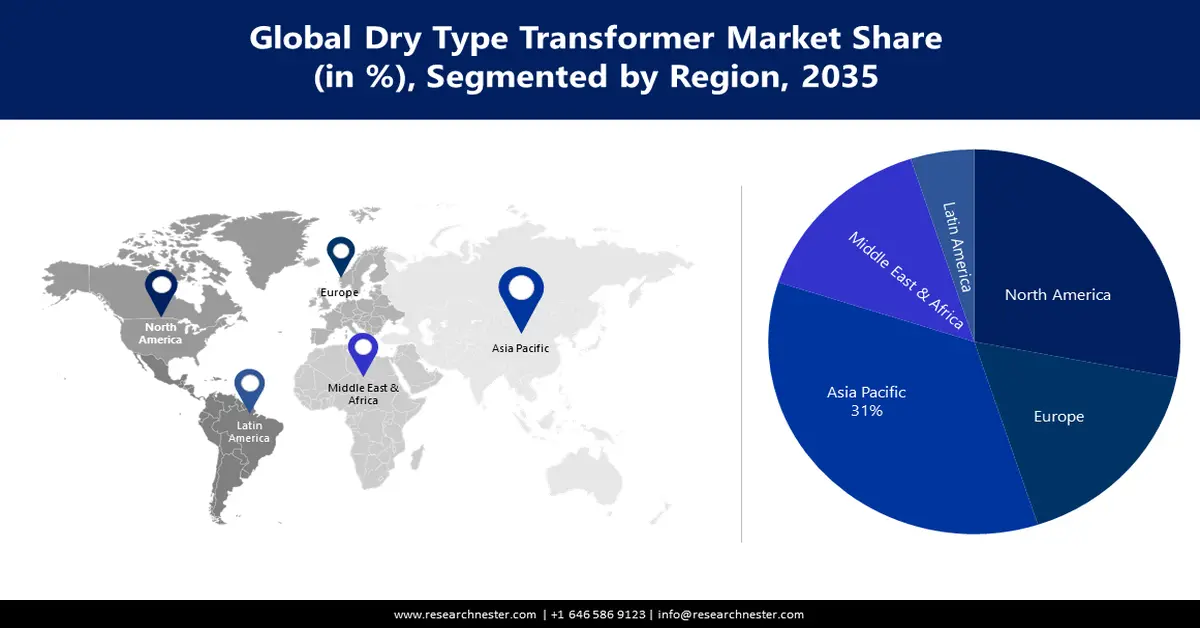
Dry Type Transformer Market Players:
- Siemens AG
- Company Overview
- Business Strategy
- Key Product Offerings
- Financial Performance
- Key Performance Indicators
- Risk Analysis
- Recent Development
- Regional Presence
- SWOT Analysis
- WEG Industries
- Eaton Corporation
- Schneider Electric SE
- Bharat Heavy Electricals Limited
- Virginia Transformer Corp
- General Electric Company
- Hyosung Heavy Industries
- Hammond Power Solutions Inc.
- ABB Ltd.
- Hyundai Electric & Energy Systems Co., Ltd.
Recent Developments
- In an effort to advance energy transition based on renewable sources Siemens AG and the International Renewable Energy Agency (IRENA) have signed a partnership agreement. This collaboration aims to support development goals and climate action initiatives.
- WEG Industries recently announced that they have supplied their encapsulated dry type transformer, which has a capacity of 2.5 MVA to data center facilities located in Chile. This transformer is equipped with a protection enclosure box that operates at a voltage class of 24/1.1kV allowing WEG Industries to expand its presence in the industry.
- Report ID: 5176
- Published Date: Sep 11, 2025
- Report Format: PDF, PPT
- Get detailed insights on specific segments/region
- Inquire about report customization for your industry
- Learn about our special pricing for startups
- Request a demo of the report’s key findings
- Understand the report’s forecasting methodology
- Inquire about post-purchase support and updates
- Ask About Company-Level Intelligence Additions
Have specific data needs or budget constraints?
Frequently Asked Questions (FAQ)
Dry Type Transformer Market Report Scope
FREE Sample Copy includes market overview, growth trends, statistical charts & tables, forecast estimates, and much more.
Connect with our Expert
See how top U.S. companies are managing market uncertainty — get your free sample with trends, challenges, macroeconomic factors, charts, forecasts, and more.
Copyright @ 2025 Research Nester. All Rights Reserved.

 Inquiry Before Buying
Inquiry Before Buying
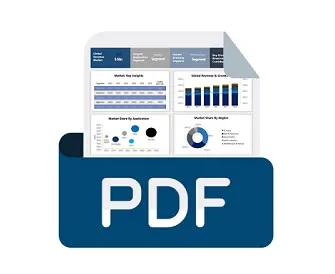

 Afghanistan (+93)
Afghanistan (+93)
 Åland Islands (+358)
Åland Islands (+358)
 Albania (+355)
Albania (+355)
 Algeria (+213)
Algeria (+213)
 American Samoa (+1684)
American Samoa (+1684)
 Andorra (+376)
Andorra (+376)
 Angola (+244)
Angola (+244)
 Anguilla (+1264)
Anguilla (+1264)
 Antarctica (+672)
Antarctica (+672)
 Antigua and Barbuda (+1268)
Antigua and Barbuda (+1268)
 Argentina (+54)
Argentina (+54)
 Armenia (+374)
Armenia (+374)
 Aruba (+297)
Aruba (+297)
 Australia (+61)
Australia (+61)
 Austria (+43)
Austria (+43)
 Azerbaijan (+994)
Azerbaijan (+994)
 Bahamas (+1242)
Bahamas (+1242)
 Bahrain (+973)
Bahrain (+973)
 Bangladesh (+880)
Bangladesh (+880)
 Barbados (+1246)
Barbados (+1246)
 Belarus (+375)
Belarus (+375)
 Belgium (+32)
Belgium (+32)
 Belize (+501)
Belize (+501)
 Benin (+229)
Benin (+229)
 Bermuda (+1441)
Bermuda (+1441)
 Bhutan (+975)
Bhutan (+975)
 Bolivia (+591)
Bolivia (+591)
 Bosnia and Herzegovina (+387)
Bosnia and Herzegovina (+387)
 Botswana (+267)
Botswana (+267)
 Bouvet Island (+)
Bouvet Island (+)
 Brazil (+55)
Brazil (+55)
 British Indian Ocean Territory (+246)
British Indian Ocean Territory (+246)
 British Virgin Islands (+1284)
British Virgin Islands (+1284)
 Brunei (+673)
Brunei (+673)
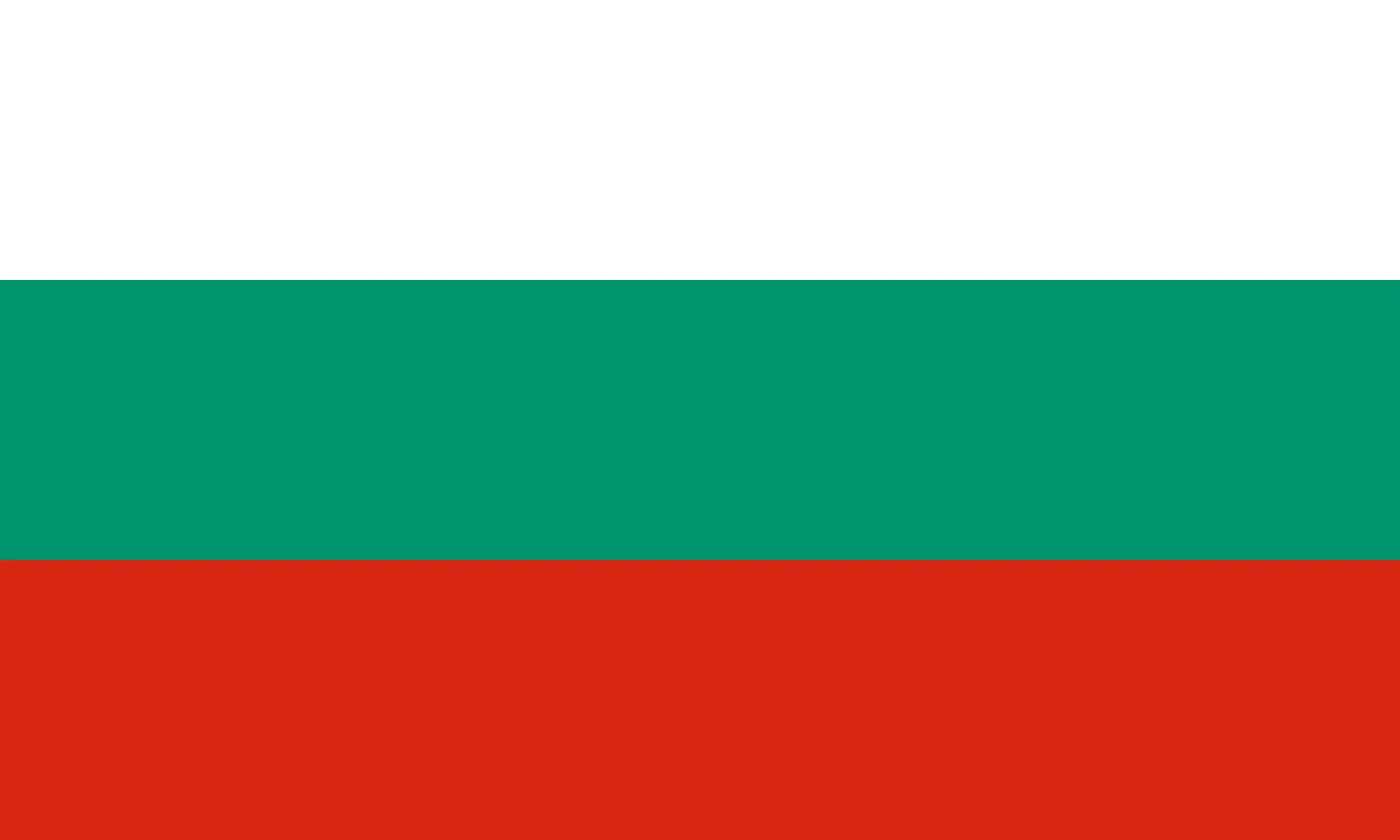 Bulgaria (+359)
Bulgaria (+359)
 Burkina Faso (+226)
Burkina Faso (+226)
 Burundi (+257)
Burundi (+257)
 Cambodia (+855)
Cambodia (+855)
 Cameroon (+237)
Cameroon (+237)
 Canada (+1)
Canada (+1)
 Cape Verde (+238)
Cape Verde (+238)
 Cayman Islands (+1345)
Cayman Islands (+1345)
 Central African Republic (+236)
Central African Republic (+236)
 Chad (+235)
Chad (+235)
 Chile (+56)
Chile (+56)
 China (+86)
China (+86)
 Christmas Island (+61)
Christmas Island (+61)
 Cocos (Keeling) Islands (+61)
Cocos (Keeling) Islands (+61)
 Colombia (+57)
Colombia (+57)
 Comoros (+269)
Comoros (+269)
 Cook Islands (+682)
Cook Islands (+682)
 Costa Rica (+506)
Costa Rica (+506)
 Croatia (+385)
Croatia (+385)
 Cuba (+53)
Cuba (+53)
 Curaçao (+599)
Curaçao (+599)
 Cyprus (+357)
Cyprus (+357)
 Czechia (+420)
Czechia (+420)
 Democratic Republic of the Congo (+243)
Democratic Republic of the Congo (+243)
 Denmark (+45)
Denmark (+45)
 Djibouti (+253)
Djibouti (+253)
 Dominica (+1767)
Dominica (+1767)
 Dominican Republic (+1809)
Dominican Republic (+1809)
 Timor-Leste (+670)
Timor-Leste (+670)
 Ecuador (+593)
Ecuador (+593)
 Egypt (+20)
Egypt (+20)
 El Salvador (+503)
El Salvador (+503)
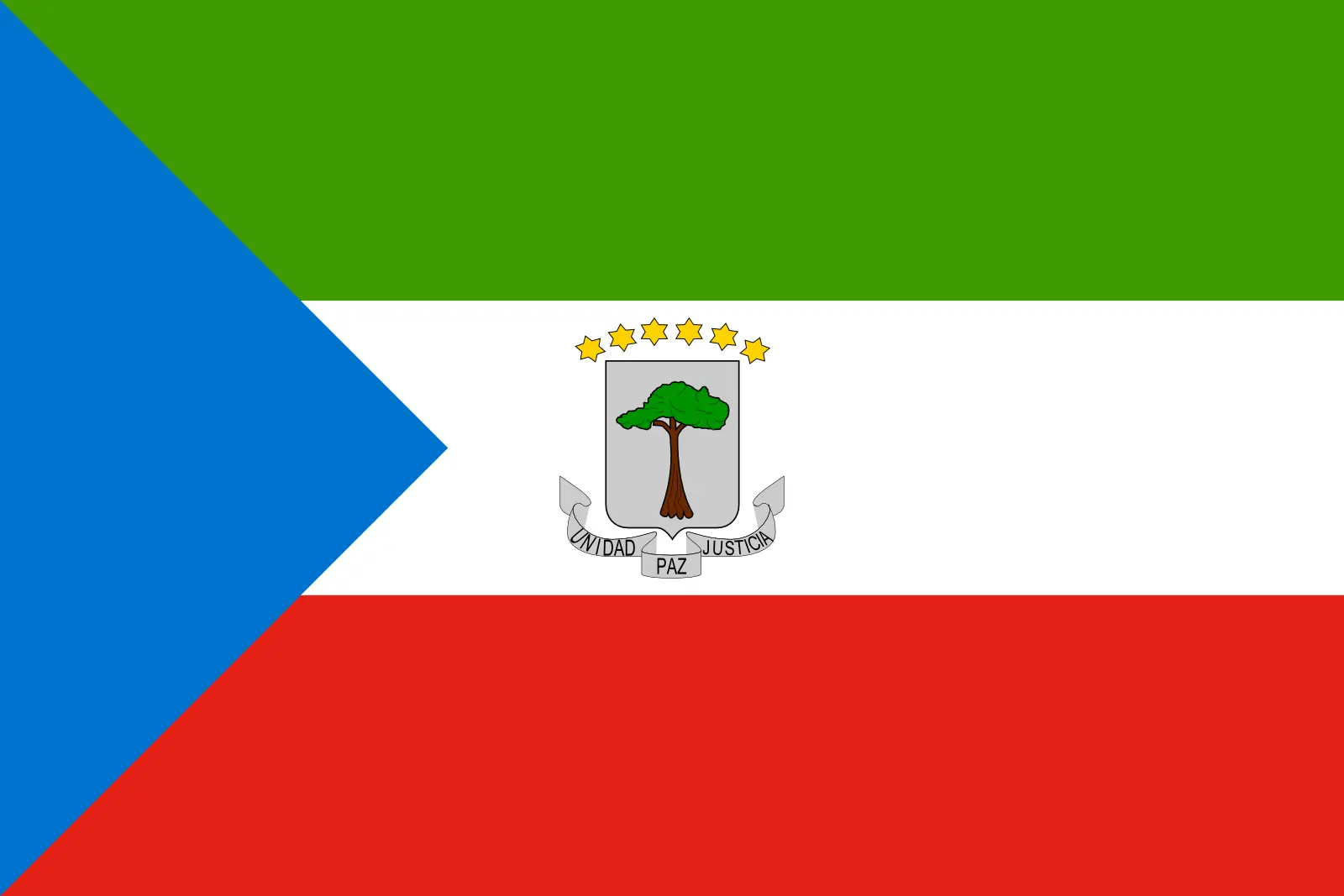 Equatorial Guinea (+240)
Equatorial Guinea (+240)
 Eritrea (+291)
Eritrea (+291)
 Estonia (+372)
Estonia (+372)
 Ethiopia (+251)
Ethiopia (+251)
 Falkland Islands (+500)
Falkland Islands (+500)
 Faroe Islands (+298)
Faroe Islands (+298)
 Fiji (+679)
Fiji (+679)
 Finland (+358)
Finland (+358)
 France (+33)
France (+33)
 Gabon (+241)
Gabon (+241)
 Gambia (+220)
Gambia (+220)
 Georgia (+995)
Georgia (+995)
 Germany (+49)
Germany (+49)
 Ghana (+233)
Ghana (+233)
 Gibraltar (+350)
Gibraltar (+350)
 Greece (+30)
Greece (+30)
 Greenland (+299)
Greenland (+299)
 Grenada (+1473)
Grenada (+1473)
 Guadeloupe (+590)
Guadeloupe (+590)
 Guam (+1671)
Guam (+1671)
 Guatemala (+502)
Guatemala (+502)
 Guinea (+224)
Guinea (+224)
 Guinea-Bissau (+245)
Guinea-Bissau (+245)
 Guyana (+592)
Guyana (+592)
 Haiti (+509)
Haiti (+509)
 Honduras (+504)
Honduras (+504)
 Hong Kong (+852)
Hong Kong (+852)
 Hungary (+36)
Hungary (+36)
 Iceland (+354)
Iceland (+354)
 India (+91)
India (+91)
 Indonesia (+62)
Indonesia (+62)
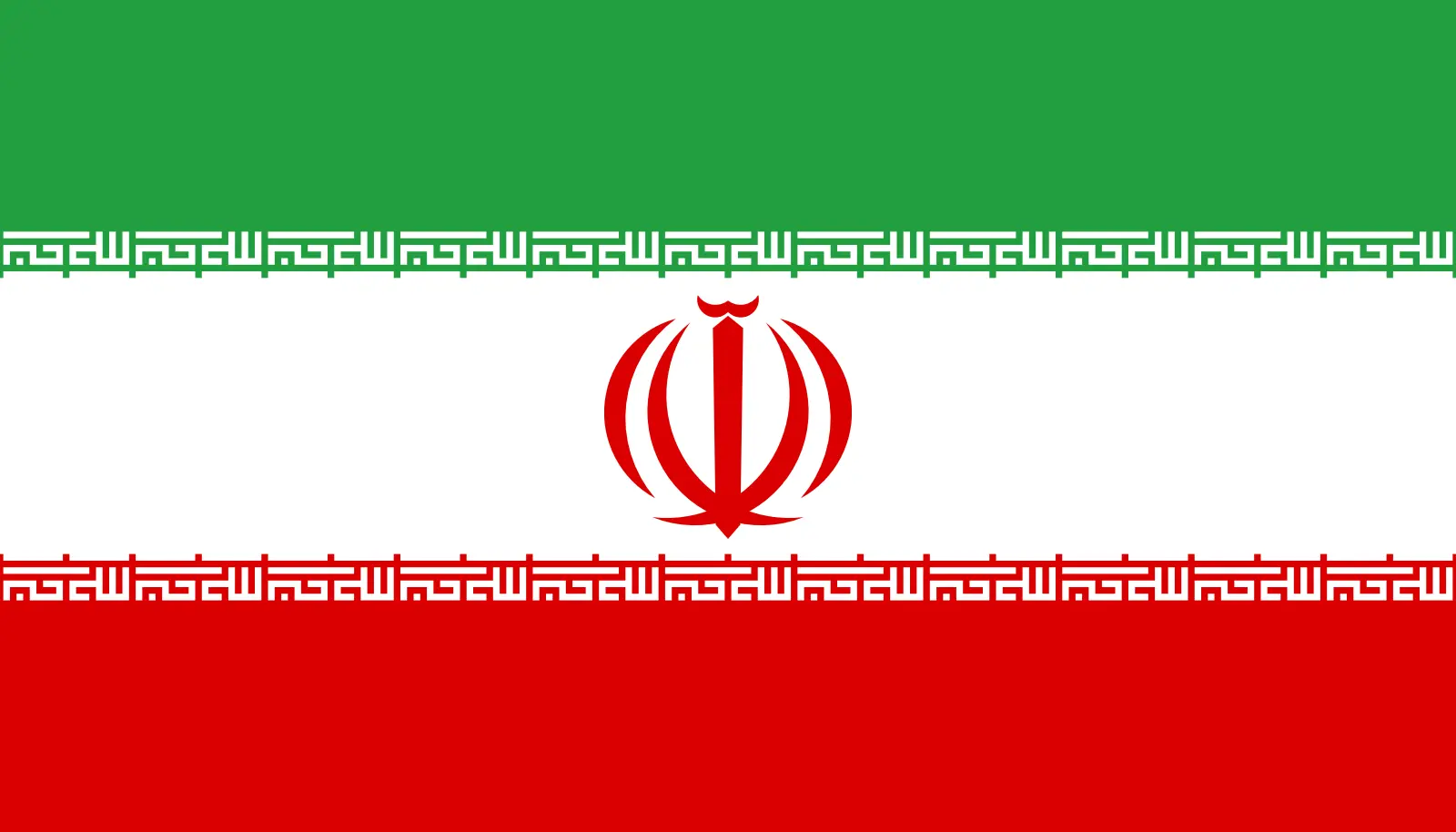 Iran (+98)
Iran (+98)
 Iraq (+964)
Iraq (+964)
 Ireland (+353)
Ireland (+353)
 Isle of Man (+44)
Isle of Man (+44)
 Israel (+972)
Israel (+972)
 Italy (+39)
Italy (+39)
 Jamaica (+1876)
Jamaica (+1876)
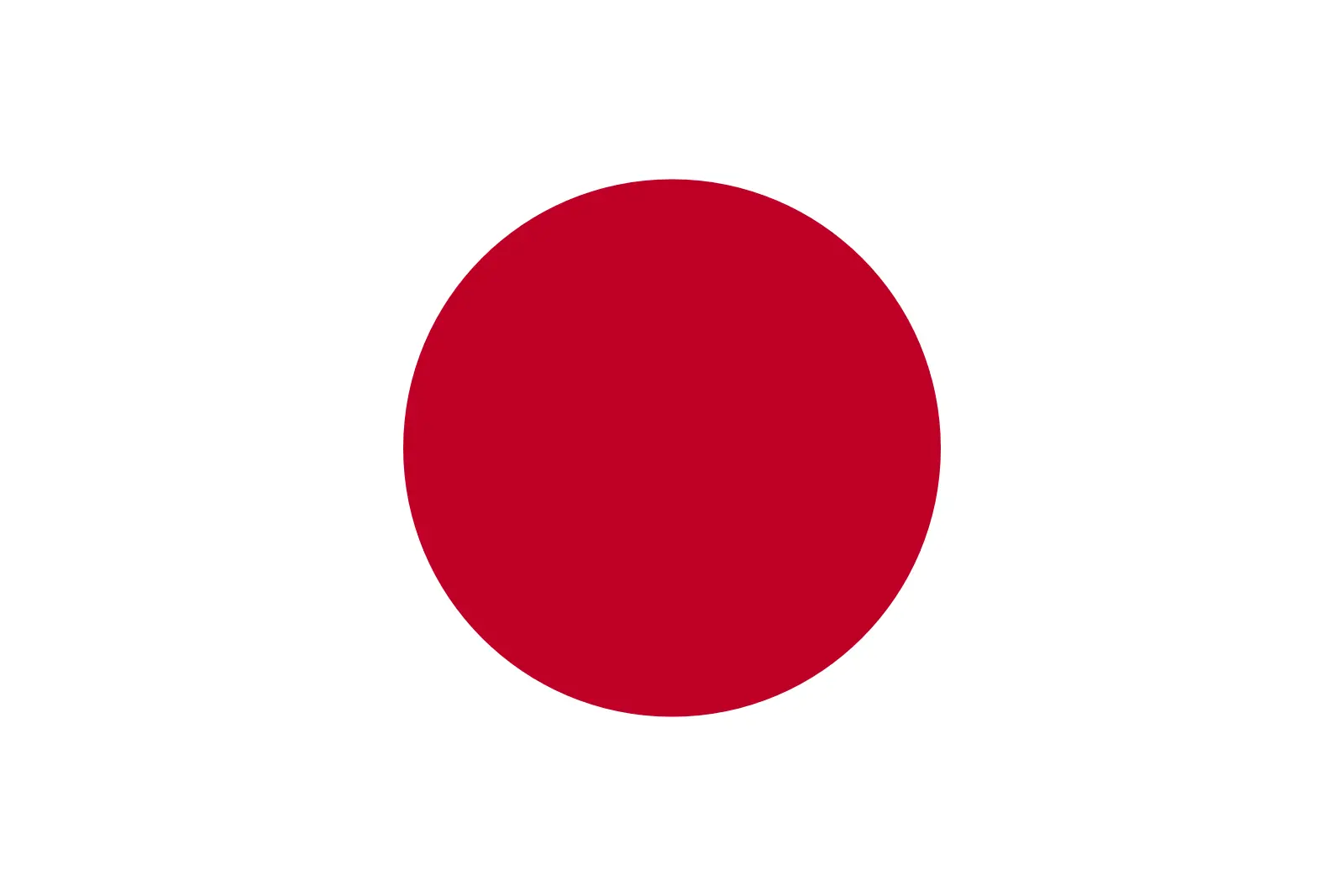 Japan (+81)
Japan (+81)
 Jersey (+44)
Jersey (+44)
 Jordan (+962)
Jordan (+962)
 Kazakhstan (+7)
Kazakhstan (+7)
 Kenya (+254)
Kenya (+254)
 Kiribati (+686)
Kiribati (+686)
 Kuwait (+965)
Kuwait (+965)
 Kyrgyzstan (+996)
Kyrgyzstan (+996)
 Laos (+856)
Laos (+856)
 Latvia (+371)
Latvia (+371)
 Lebanon (+961)
Lebanon (+961)
 Lesotho (+266)
Lesotho (+266)
 Liberia (+231)
Liberia (+231)
 Libya (+218)
Libya (+218)
 Liechtenstein (+423)
Liechtenstein (+423)
 Lithuania (+370)
Lithuania (+370)
 Luxembourg (+352)
Luxembourg (+352)
 Macao (+853)
Macao (+853)
 Madagascar (+261)
Madagascar (+261)
 Malawi (+265)
Malawi (+265)
 Malaysia (+60)
Malaysia (+60)
 Maldives (+960)
Maldives (+960)
 Mali (+223)
Mali (+223)
 Malta (+356)
Malta (+356)
 Marshall Islands (+692)
Marshall Islands (+692)
 Mauritania (+222)
Mauritania (+222)
 Mauritius (+230)
Mauritius (+230)
 Mayotte (+262)
Mayotte (+262)
 Mexico (+52)
Mexico (+52)
 Micronesia (+691)
Micronesia (+691)
 Moldova (+373)
Moldova (+373)
 Monaco (+377)
Monaco (+377)
 Mongolia (+976)
Mongolia (+976)
 Montenegro (+382)
Montenegro (+382)
 Montserrat (+1664)
Montserrat (+1664)
 Morocco (+212)
Morocco (+212)
 Mozambique (+258)
Mozambique (+258)
 Myanmar (+95)
Myanmar (+95)
 Namibia (+264)
Namibia (+264)
 Nauru (+674)
Nauru (+674)
 Nepal (+977)
Nepal (+977)
 Netherlands (+31)
Netherlands (+31)
 New Caledonia (+687)
New Caledonia (+687)
 New Zealand (+64)
New Zealand (+64)
 Nicaragua (+505)
Nicaragua (+505)
 Niger (+227)
Niger (+227)
 Nigeria (+234)
Nigeria (+234)
 Niue (+683)
Niue (+683)
 Norfolk Island (+672)
Norfolk Island (+672)
 North Korea (+850)
North Korea (+850)
 Northern Mariana Islands (+1670)
Northern Mariana Islands (+1670)
 Norway (+47)
Norway (+47)
 Oman (+968)
Oman (+968)
 Pakistan (+92)
Pakistan (+92)
 Palau (+680)
Palau (+680)
 Palestine (+970)
Palestine (+970)
 Panama (+507)
Panama (+507)
 Papua New Guinea (+675)
Papua New Guinea (+675)
 Paraguay (+595)
Paraguay (+595)
 Peru (+51)
Peru (+51)
 Philippines (+63)
Philippines (+63)
 Poland (+48)
Poland (+48)
 Portugal (+351)
Portugal (+351)
 Puerto Rico (+1787)
Puerto Rico (+1787)
 Qatar (+974)
Qatar (+974)
 Romania (+40)
Romania (+40)
 Russia (+7)
Russia (+7)
 Rwanda (+250)
Rwanda (+250)
 Saint Barthélemy (+590)
Saint Barthélemy (+590)
 Saint Helena, Ascension and Tristan da Cunha (+290)
Saint Helena, Ascension and Tristan da Cunha (+290)
 Saint Kitts and Nevis (+1869)
Saint Kitts and Nevis (+1869)
 Saint Lucia (+1758)
Saint Lucia (+1758)
 Saint Martin (French part) (+590)
Saint Martin (French part) (+590)
 Saint Pierre and Miquelon (+508)
Saint Pierre and Miquelon (+508)
 Saint Vincent and the Grenadines (+1784)
Saint Vincent and the Grenadines (+1784)
 Samoa (+685)
Samoa (+685)
 San Marino (+378)
San Marino (+378)
 Sao Tome and Principe (+239)
Sao Tome and Principe (+239)
 Saudi Arabia (+966)
Saudi Arabia (+966)
 Senegal (+221)
Senegal (+221)
 Serbia (+381)
Serbia (+381)
 Seychelles (+248)
Seychelles (+248)
 Sierra Leone (+232)
Sierra Leone (+232)
 Singapore (+65)
Singapore (+65)
 Sint Maarten (Dutch part) (+1721)
Sint Maarten (Dutch part) (+1721)
 Slovakia (+421)
Slovakia (+421)
 Slovenia (+386)
Slovenia (+386)
 Solomon Islands (+677)
Solomon Islands (+677)
 Somalia (+252)
Somalia (+252)
 South Africa (+27)
South Africa (+27)
 South Georgia and the South Sandwich Islands (+0)
South Georgia and the South Sandwich Islands (+0)
 South Korea (+82)
South Korea (+82)
 South Sudan (+211)
South Sudan (+211)
 Spain (+34)
Spain (+34)
 Sri Lanka (+94)
Sri Lanka (+94)
 Sudan (+249)
Sudan (+249)
 Suriname (+597)
Suriname (+597)
 Svalbard and Jan Mayen (+47)
Svalbard and Jan Mayen (+47)
 Eswatini (+268)
Eswatini (+268)
 Sweden (+46)
Sweden (+46)
 Switzerland (+41)
Switzerland (+41)
 Syria (+963)
Syria (+963)
 Taiwan (+886)
Taiwan (+886)
 Tajikistan (+992)
Tajikistan (+992)
 Tanzania (+255)
Tanzania (+255)
 Thailand (+66)
Thailand (+66)
 Togo (+228)
Togo (+228)
 Tokelau (+690)
Tokelau (+690)
 Tonga (+676)
Tonga (+676)
 Trinidad and Tobago (+1868)
Trinidad and Tobago (+1868)
 Tunisia (+216)
Tunisia (+216)
 Turkey (+90)
Turkey (+90)
 Turkmenistan (+993)
Turkmenistan (+993)
 Turks and Caicos Islands (+1649)
Turks and Caicos Islands (+1649)
 Tuvalu (+688)
Tuvalu (+688)
 Uganda (+256)
Uganda (+256)
 Ukraine (+380)
Ukraine (+380)
 United Arab Emirates (+971)
United Arab Emirates (+971)
 United Kingdom (+44)
United Kingdom (+44)
 Uruguay (+598)
Uruguay (+598)
 Uzbekistan (+998)
Uzbekistan (+998)
 Vanuatu (+678)
Vanuatu (+678)
 Vatican City (+39)
Vatican City (+39)
 Venezuela (Bolivarian Republic of) (+58)
Venezuela (Bolivarian Republic of) (+58)
 Vietnam (+84)
Vietnam (+84)
 Wallis and Futuna (+681)
Wallis and Futuna (+681)
 Western Sahara (+212)
Western Sahara (+212)
 Yemen (+967)
Yemen (+967)
 Zambia (+260)
Zambia (+260)
 Zimbabwe (+263)
Zimbabwe (+263)
